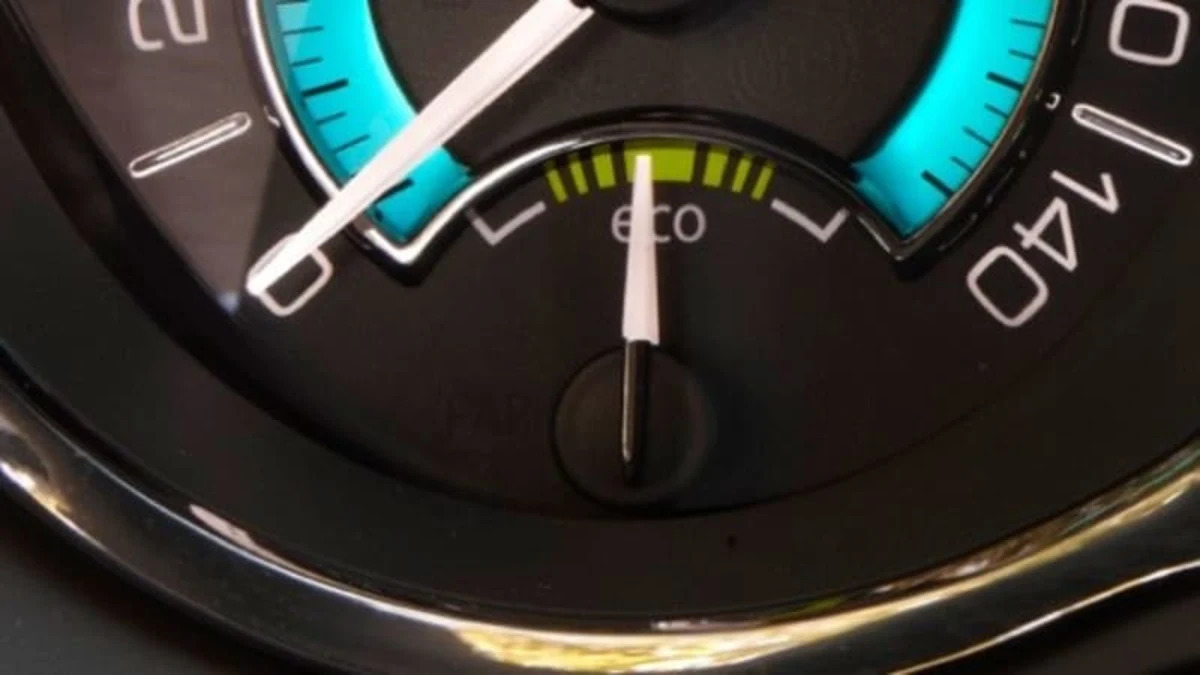2012 Buick LaCrosse eAssist – Click above for high-res image gallery
At first glance, the white "Eco" needle over an all-green background on the 2012 Buick LaCrosse with eAssist feels wrong. The needle sits at the 12 o'clock position and there's green on either side, which tells the driver nothing. Well, nothing until you understand what the needle is telling you, and then you realize that what GM has done here is reinvent the dashboard to now include the best possible and simplest green driving tutor. Here's how it works:
When you're stopped, the needle remains pointed perfectly upwards. This is the needle's rest spot, and it matches the "auto stop" indicator over on the tachometer (the speedometer and tachometer are, in our opinion, on the wrong sides of the cluster, but that's another story). When you gently accelerate, the eco needle doesn't move, or maybe it moves a tiny bit off to the right. If you step on the go pedal hard, the needle goes past the green and into the black. Anyone who's driven a car with an instant eco-driving gauge will find all this terribly familiar, even if you might expect there to be a red zone at some point. What's much more interesting – and why the needle is such a good driving instructor – is what happens when you brake. (Continue reading...)
In a Toyota Prius, say, when you hit the brakes, a dashboard indicator will tell you that you're now regenerating energy. This is true, but it's not all that accurate, because often there is energy being wasted because the driver didn't coast/decelerate enough before the stop light. In the LaCross eAssist, the paradigm is shifted. If you hit the brakes hard, you don't get a happy fluctuation into the "recharge" zone. Instead, the needle goes into the black on the other end of the spectrum. Hypermilers should recognize this as a great visual example of spending too much energy to get going and then needing to burn some off just to come to a stop. If you drive the LaCrosse with eAssist in the most efficient manner possible, you will never need to slam on the brakes and that eco needle will never leave the green zone. Brilliant.
Apparently, Buick engineers spent a lot of time discussing whether or not this kind of information display was the right thing to tell the drive. A similar system is used in the Chevy Volt, where you're trying to keep that digital ball floating, but the LaCrosse is intended to be a mass-market vehicle (one reason why the eAssist 2.4L version costs the same as the V6 3.6L model) and that means a different type of driver. For this broader audience, leaning to keep the needle in the green will automatically teach them be a more efficient driver.
This isn't to say that the system is perfect. We'd like it to be bigger and more noticeable, for one thing. Also, it's not entirely clear exactly how or when the needle moves far from "normal," and it would be wonderful if you could adjust the sensitivity to be harsher or more gentle, depending on how Gerdes you want to be about your driving style. In general, though, we noticed that the needle reliably stayed in the green when we drove in what we thought was a sensible manner, both in the city and at highway speeds. The combination of effectiveness and simplicity while focusing on the deceleration side of the equation – and not just the acceleration – is completely laudable and we hope to see similar gauges used in other vehicles. Once people understand what they're showing, anyway.
You can learn more about the LaCrosse with eAssist in our previous Quick Spin and other posts.


Sign in to post
Please sign in to leave a comment.
Continue